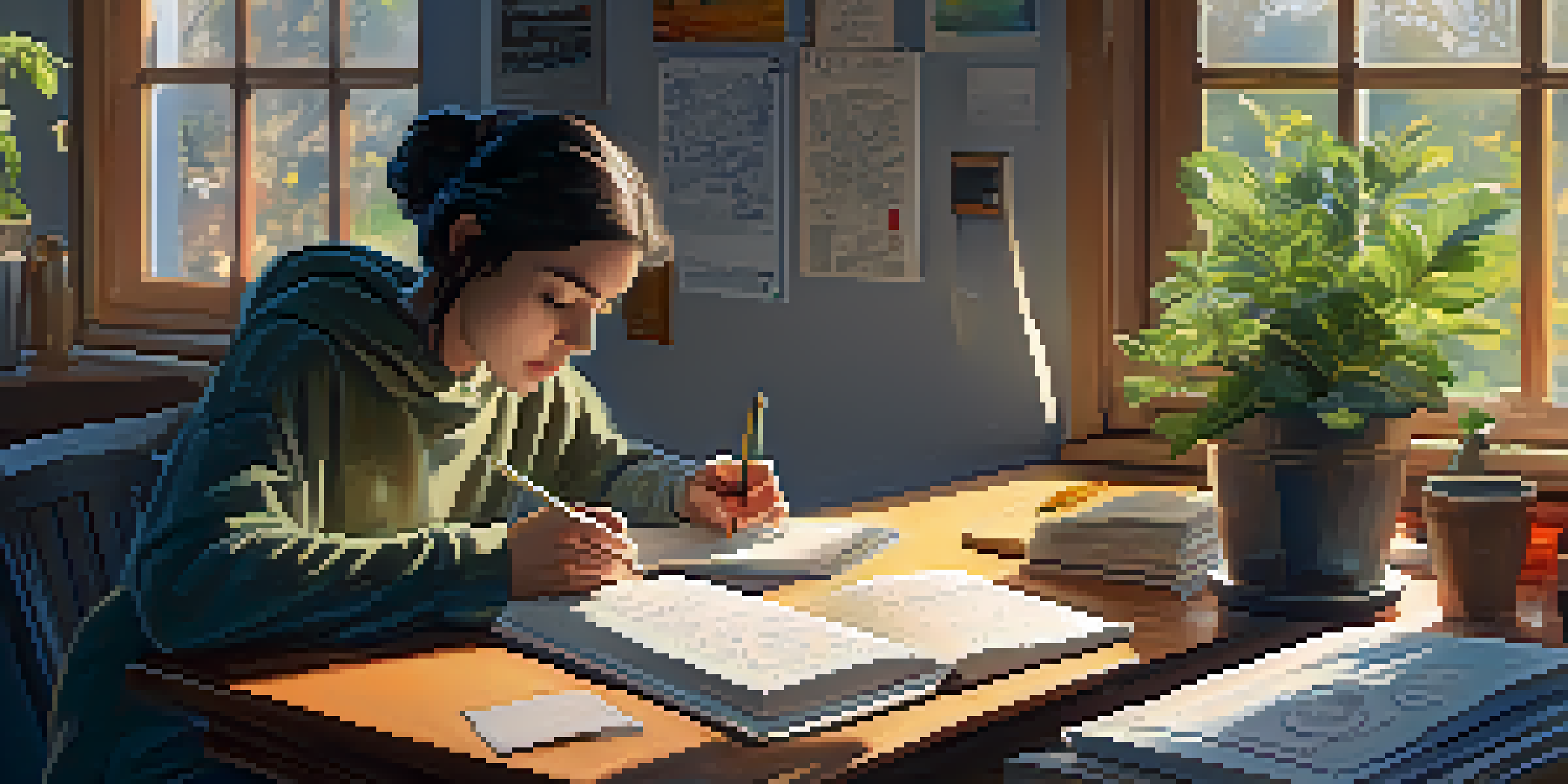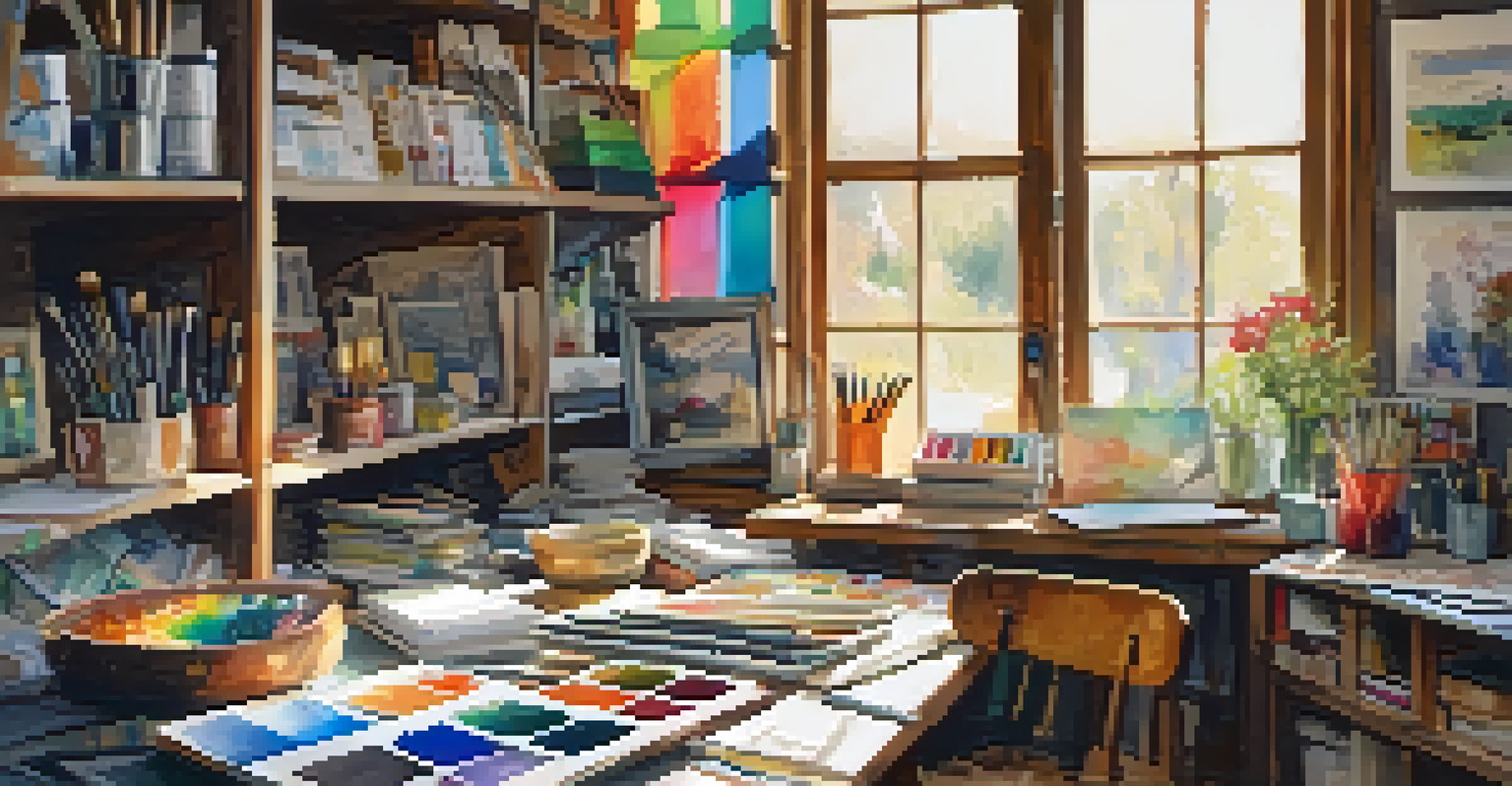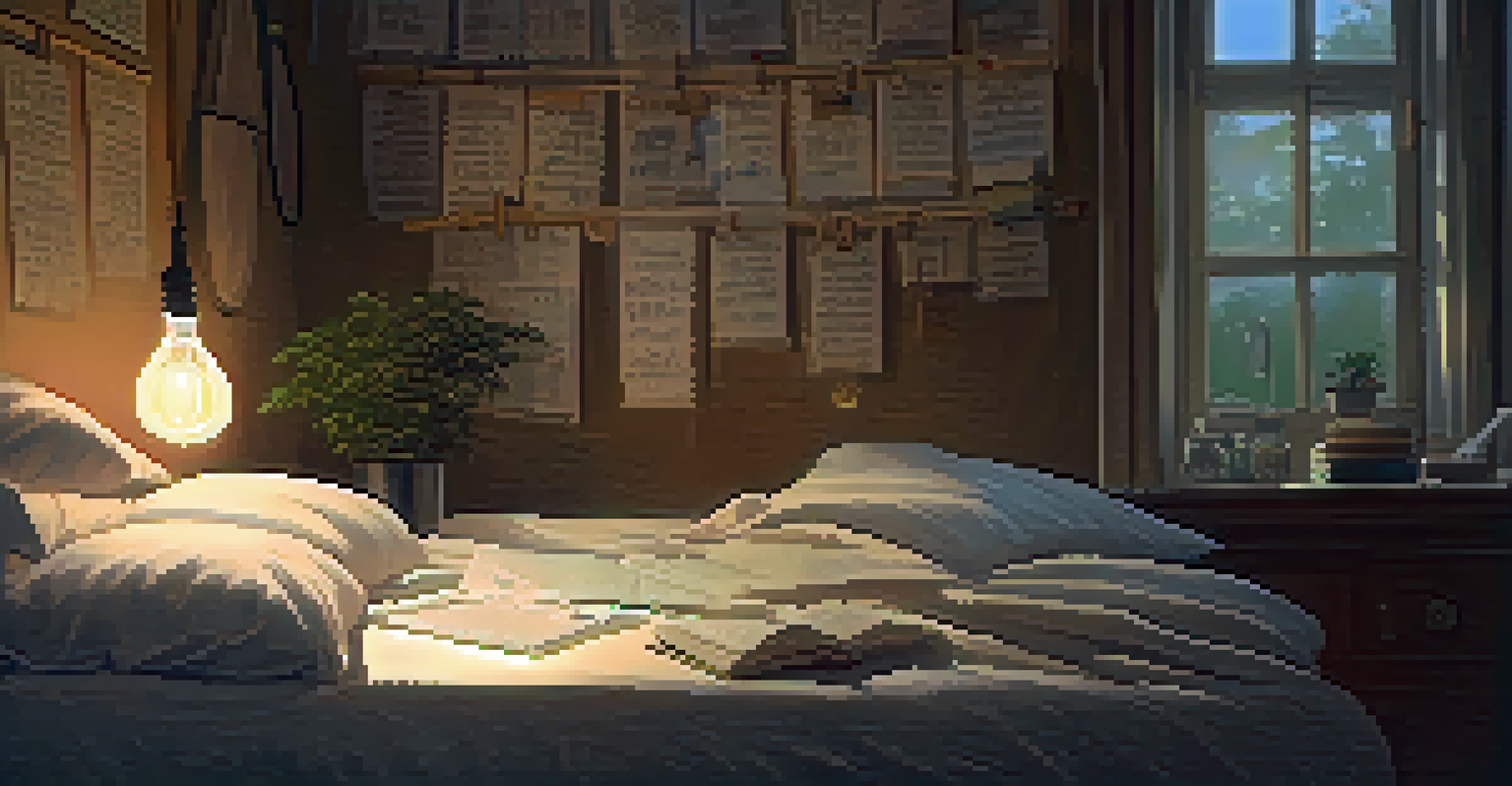Creative Journaling Techniques to Boost Self-Expression

Understanding Creative Journaling and Its Benefits
Creative journaling is more than just writing down your thoughts; it's a powerful tool for self-discovery and expression. By blending words with art, you can explore your emotions and experiences in a unique way. This method not only helps clarify your thoughts but also nurtures your creativity, making it a fulfilling practice.
Journaling is like whispering to one's self and listening at the same time.
The benefits of creative journaling extend beyond the pages of your journal. It can reduce stress, improve mental clarity, and even boost your mood. Imagine having a safe space where you can pour out your feelings, doodle, and reflect—all while enhancing your self-awareness and emotional intelligence.
Incorporating creative journaling into your routine can be liberating. Whether you're an experienced writer or a complete novice, this practice offers a judgment-free zone to document your journey. So, let's dive into some techniques that can help you get started on this expressive adventure!
Bullet Journaling: Organizing Thoughts Creatively
Bullet journaling combines organization with creativity, allowing you to track your goals while expressing yourself. This method uses symbols, short phrases, and doodles to organize tasks and thoughts in a visually appealing way. Picture a planner that evolves into a canvas for your creativity—each page a blend of function and art.

One of the best parts about bullet journaling is its flexibility. You can customize it to reflect your personality and needs, whether you want to focus on daily tasks, gratitude, or creative prompts. This adaptability makes it a perfect starting point for anyone looking to boost their self-expression.
Creative Journaling for Self-Discovery
Creative journaling combines writing and art to foster self-exploration and emotional expression.
To get started, all you need is a notebook and some pens. Create your own key for symbols, and begin designing pages that resonate with your goals and emotions. Over time, you'll find that this simple practice can transform the way you perceive your daily life and aspirations.
Art Journaling: Merging Creativity with Reflection
Art journaling is a beautiful way to express feelings that words sometimes can’t capture. By incorporating drawings, paintings, or collages, you can create a visual narrative of your experiences. Think of it as a scrapbook of your emotions, where every color and shape tells a story.
The pages of your journal are a safe space where you can pour out your thoughts and feelings without judgment.
This technique encourages you to explore your artistic side without the pressure of perfection. It’s about the process, not the end result. You might find that using mixed media—like combining watercolors with magazine clippings—can lead to surprising discoveries about yourself.
To begin art journaling, invest in a sketchbook and some basic supplies. Allow yourself to play with different materials and techniques. As you fill the pages, you'll likely discover new facets of your personality and emotions, enriching your self-expression in the process.
Prompt Journaling: Sparking Creativity and Insight
Prompt journaling involves responding to specific questions or statements designed to inspire deeper reflection. These prompts can range from 'What makes you happy?' to 'Describe a moment of bravery.' They serve as catalysts for self-discovery, guiding your thoughts in unexpected directions.
Using prompts can be particularly beneficial when you're feeling stuck or unsure of what to write about. They provide a gentle nudge, helping you break through creative blocks and explore new themes. Imagine having a friend who always knows the right questions to ask to spark your imagination—that’s what prompts do.
Diverse Techniques for Expression
Different journaling techniques, like bullet and art journaling, allow for personalized and flexible self-expression.
You can find prompts online or create your own based on your interests. Set aside time each week to explore these questions, and you might be surprised by the insights you uncover about yourself. This practice not only enhances your writing but also deepens your understanding of your emotions and experiences.
Dream Journaling: Unlocking Your Subconscious Thoughts
Dream journaling is a fascinating way to tap into your subconscious mind and understand your inner thoughts and feelings. By recording your dreams upon waking, you can explore symbols, patterns, and emotions that may reveal underlying issues or desires. Think of it as a treasure hunt for insights hidden in the realm of sleep.
This technique encourages you to engage with your dreams more intentionally. Over time, you might notice recurring themes or symbols that resonate with your waking life. Keeping a dream journal can serve as a mirror, reflecting parts of yourself that you may not be aware of during your conscious hours.
To start dream journaling, keep a notebook by your bed and jot down your dreams as soon as you wake up. Even if you remember only fragments, write them down. As you build a collection of dreams, you’ll find patterns and messages that can guide your self-exploration and personal growth.
Stream of Consciousness: Writing Without Limits
Stream of consciousness writing is all about letting your thoughts flow freely onto the page without worrying about grammar or structure. This technique can be incredibly liberating, allowing you to explore your mind's inner workings without constraints. Imagine it as a mental purge, where you can release all your thoughts in a rush.
The beauty of this approach is that it encourages authenticity. You might discover hidden feelings or ideas that you didn’t even know were there. By writing without judgment, you give yourself permission to express emotions that are often suppressed, paving the way for deeper self-understanding.
Benefits of Gratitude Journaling
Gratitude journaling shifts your mindset towards positivity, enhancing overall well-being and emotional resilience.
To practice stream of consciousness writing, set a timer for 10-15 minutes and write whatever comes to mind. Don’t stop to edit or censor your thoughts—just let them spill out. This technique can be a powerful tool for self-discovery, revealing insights that lead to greater self-expression and creativity.
Gratitude Journaling: Cultivating Positivity and Reflection
Gratitude journaling is a wonderful technique that focuses on acknowledging and appreciating the positive aspects of your life. By regularly writing down what you’re thankful for, you shift your mindset toward positivity. It’s like training your brain to notice the little joys that often go unnoticed amidst daily chaos.
This practice not only boosts your mood but also enhances your overall well-being. Research shows that gratitude can reduce stress and improve emotional resilience. Imagine starting each day by reflecting on what brings you joy—it can transform your perspective and foster a deeper connection to your life.

To incorporate gratitude journaling into your routine, set aside a few minutes each day or week to jot down things you’re grateful for. This could be anything from a warm cup of coffee to a supportive friend. Over time, you’ll cultivate a habit of positivity that enriches your self-expression and overall outlook on life.
Combining Techniques for Enhanced Self-Expression
One of the most exciting aspects of creative journaling is that you don’t have to stick to just one technique. Feel free to blend approaches to create a unique journaling experience that reflects your personality. For instance, you might start with a prompt, follow it with some stream of consciousness writing, and then add an art piece to visualize your thoughts.
Combining techniques allows you to explore different facets of your self-expression. You might find that certain methods resonate more with you on different days, depending on your mood or what you’re processing at the moment. This flexibility can keep your journaling practice fresh and engaging.
Start experimenting by choosing two or three techniques that speak to you. As you weave them together, you’ll likely uncover new insights and dimensions of your creativity. Remember, the goal is to enjoy the process and let your self-expression flow naturally, creating a personalized journaling journey.